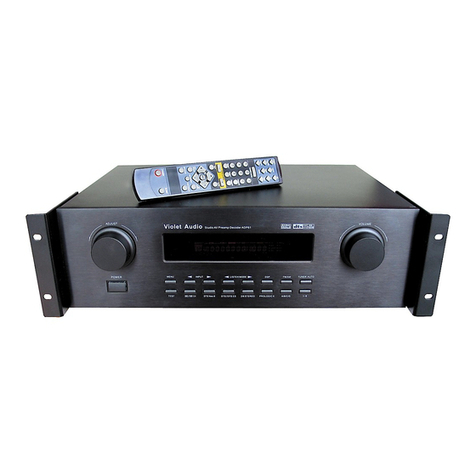1
Voltage:
Voltage are 230/120V AC,50/60Hz.
CAUTION: To reduce the risk of electric shock, do
not remove cover (or back). No user-serviceable
parts inside. Please refer all such issues to
qualified service personnel.
CAUTION
RISK OF SHOCK
NOTICE! !NOTICE! !
Thank you very much for purchasing our product.
pleasure
for many years to come
enjoy
Also, k
We sincerely hope it will bring you much
.
In order to optimum performance from this
unit, as well as for matters of personal safety for all
concerned, please read this manual carefully.
eep it in a safe place for future reference.
Explanation of Graphical Symbols
The lightning flash & arrowhead symbol,
within an equilateral triangle, is intended
to alert you to the presence of danger.
The exclamation point within an equilate-
ral triangle is intended to alert you to the
presence of important operating and ser-
vicing instructions.
Important Safety Instructions
1. Please read all instructions. All the safety and
operating instructions should be read carefully before
operating this appliance.
2. Store these safety and operating instructions in a safe
place for future reference.
3. Please heed all warnings. All warnings issued in this
manual exist not only to prevent potential damage to
equipment, but also to ensure your personal safety.
4. Follow all instructions. In order to enjoy optimum
performance, please follow all instructions and procedures.
5. Do not use this apparatus near water.
6. Remove any dust by using dry cloth or brush.
If more thorough cleaning is necessary, use damp cloth
(in this event, please disconnect unit from AC outlet).
7. Do not block ventilation openings. Proper airflow is
essential for optimum operation.
8. Keep unit away from heat sources such as radiators,
stoves, ovens, heating ducts and devices (including
amplifiers) that can potentially produce heat.
9. Do not tamper with the AC (power) lead. If the plug
provided does not fit your power outlet, consult qualified
service personnel or electrician for a suitable solution.
Also, never use a damaged AC lead, for any purpose!
10. Take measures to protect AC power lead from being
walked on, crushed, twisted, cut or pinched. Exposed
core is highly dangerous if plugged into AC outlet.
11. Only use attachments and accessories as specified
by the manufacturer. Never force connectors!
12. Avoid over-stacking equipment. Stacking more than
two units can become unsafe for equipment and operator
alike. Use only with a cart, stand, mounting brackets or
table specified by your supplier, or specifically sold with
the apparatus. Please secure firmly if using a trolley or cart.
WARNING
To reduce the risk of fire or electric shock, do not
expose this unit to rain or moisture.
PLEASE FOLLOW THESE STEPS:
PLEASE REGISTER YOUR PRODUCT ON
www.violetaudio.com
Continues overleaf




























